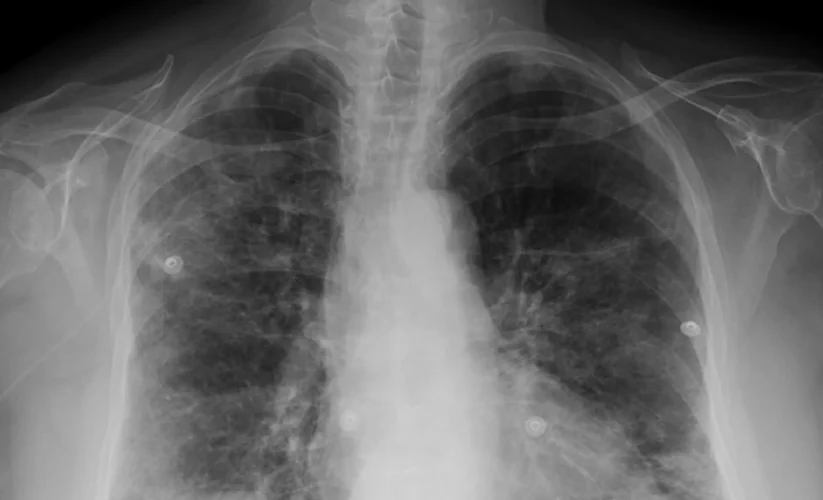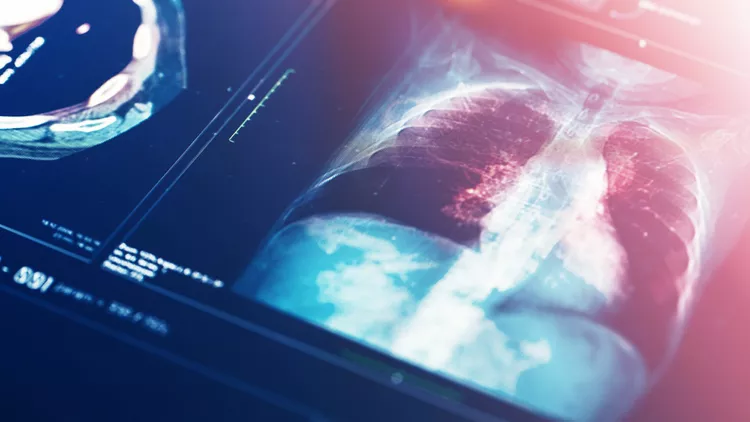
What is Multifocal Pneumonia?
Multifocal pneumonia is an infection in the lungs that attacks more than one place, unlike typical pneumonia which goes for just a singular spot. The signs of this illness are similar to those of regular pneumonia such as high body temperature, coughing and difficulty in breathing. To identify multifocal pneumonia, doctors use X-rays and sputum tests. Starting treatment quickly with antibiotics, antifungals or supportive methods is very important to avoid complications such as lung abscesses or respiratory distress issues.
Causes of Multifocal Pneumonia
In your lungs, multifocal pneumonia may result from different kinds of invaders.
- Viruses: These are the usual suspects, like influenza (the flu), respiratory syncytial virus (RSV), and adenovirus.
- Bacteria: Streptococcus pneumoniae and Staphylococcus aureus are the usual bacterial suspects.
- Fungi: Pneumocystis jiroveci is a kind of fungi that can create pneumonia in multiple areas, particularly among those people who have weak immune systems.
Symptoms of Multifocal Pneumonia
When it comes to symptoms, multifocal pneumonia unlike the single-lobed kind can hit you harder.
- The Classics: Fever, cough (with mucus or pus), trouble breathing and pain in the chest are symptoms commonly seen.
- Beyond the Basics: Rapid breathing, fatigue, loss of appetite, and wheezing can also occur.
- Variations with Cause: Even if these symptoms are general, the particular cause (virus, bacteria, fungus) could affect how strong they are or if there are any more symptoms.
- Age Makes a Difference: Symptoms that are not typical can be seen in various age groups. For instance, infants and elderly people may show signs like confusion or mental awareness alteration.
Diagnosis
Finding multifocal pneumonia uses a two-step method. At first, the doctor will talk about your medical past and do a physical check-up to hear if there are any strange lung sounds. Then they might use imaging tests such as chest x-rays or computed tomography (CT) scans to see the parts of your lungs that are inflamed. Exams of sputum, the mucus that is coughed out, and blood examinations can assist in pinpointing the cause – bacteria, virus or fungus. This helps to direct towards a treatment plan that works best for you.

Treatment Options
Multifocal pneumonia throws a punch, but treatment options are your defense.
1. Targeted Therapy
- Antibiotics: These are the main treatment methods for bacterial infections. The choice of an antibiotic depends on which bacteria has been identified.
- Antiviral Medications: There is no cure specifically for viral pneumonia, but antiviral medicines can aid in lessening the time span and intensity of symptoms, especially for influenza.
- Antifungal Medicines: When the reason behind the infection is fungus, antifungal medicines are suggested to fight against that particular one.
2. Supportive Measures
- Breathing Help: For bad situations, oxygen treatment could be required to enhance oxygen levels in the blood.
- Managing pain: Medicines are given for reducing chest pain and discomfort when coughing.
- Rest and Hydration: Plenty of rest and fluids are crucial for recovery.
- Recall: With early diagnosis, the correct treatment can be initiated quickly which results in faster and easier recovery.
Potential Complications
If multifocal pneumonia is not treated, it can result in a chain of complications. Fluid around the lungs, known as pleural effusion, might cause chest pain and breathing issues. There’s also a chance for lung abscesses (pockets full of pus within the lung) to develop that might need antibiotics or draining out. In very serious situations, a person may experience Acute Respiratory Distress Syndrome (ARDS).
This is when the lungs find it difficult to supply enough oxygen to the body, causing strain on all organs. Sepsis, which is a dangerous response of the body to infection, can also be one more complication. Sometimes there might be damage that lasts for a long time in your lungs such as scarring and this could make breathing tougher even after you have gotten better.
Prognosis of Multifocal Pneumonia
The chance of getting better from multifocal pneumonia is usually good. People who are healthy and get diagnosed fast with correct treatment can often fully recover within a few weeks. Yet, the age, existing health issues, how severe the infection is and when it gets treated can all affect how well one will get.
The sooner you get medical assistance, the better chance to halt further damage and start healing. Follow whatever your doctor advises for managing your condition. This can include taking medicines, doing exercises or other treatments. Track progress: Regularly check how well you are doing by monitoring any changes in symptoms or signs of improvement. This helps to adjust the treatment plan accordingly.
Prevention Strategies
Good thing, you got some weapons to fight with multifocal pneumonia! Vaccination against influenza and pneumococcus is a good first step. Doing easy hygiene practices like often washing your hands and staying away from close contact with ill people helps stop the spread of germs. Also, your mouth should be kept clean because sometimes bacteria from there can move into the lungs. If you smoke, it is very important that you stop doing so. Finally, leading a healthy life with balanced food and exercise will make your immune system stronger which helps in fighting against infections generally.
When to See a Doctor
Do not overlook signs of danger. If you have serious difficulty in breathing, feel confused, your lips or fingertips turn blue, a high fever that does not get better with medicine or intense chest pain which becomes worse when you breathe or cough these are all situations where it is essential to get urgent medical help.
A constant cough or fever, particularly if there are additional problems with your breathing system, should not be ignored. Diagnosis at the beginning and treatment are very important for a complete recovery and to stop complications from multifocal pneumonia.
Multifocal Pneumonia in Children
The signs of multifocal pneumonia can be distinct in children. In babies, watching out for wheezing, fast breathing, abnormal irritability or feeding difficulties is important. For older kids, pain in the chest area might happen together with abdominal pain or throwing up along with cough and fever. Do not delay in getting medical help, because sometimes it is difficult for young ones to express the symptoms. To assist your child in dealing with the illness, make sure they get enough rest, provide them lots of liquids and use a cool-mist humidifier to relieve congestion. Keep in mind that early identification and adherence to the doctor’s plan are very important for quick healing.
Multifocal Pneumonia in Elderly Adults
In elderly adults, multifocal pneumonia can be a clever adversary. They may not show the usual symptoms such as cough and fever but instead present with atypical signs like confusion, falls or loss of appetite. Seniors frequently possess pre-existing health problems; therefore, it is very important for physicians to take those into account when making diagnoses. Vaccination, especially for this age group
Multifocal pneumonia might appear complex, but with understanding, you can handle it. The most important elements for a good recovery are early finding and correct treatment. Keep in mind that prevention is always the best way to protect yourself. You can keep your lungs healthy by taking vaccination, having a good lifestyle and maintaining clean habits. You don’t have to worry about this respiratory challenge. Breathe freely and manage your lung health confidently.





